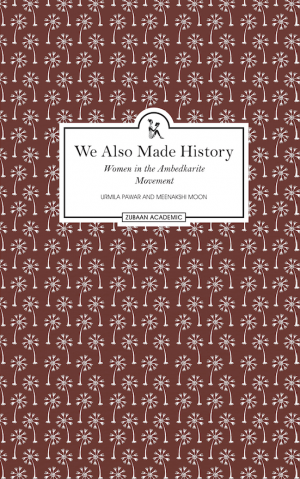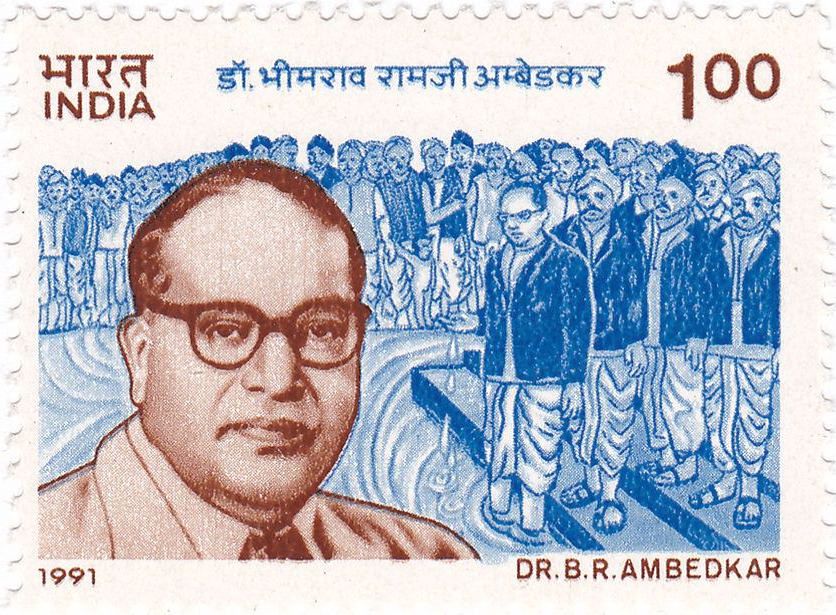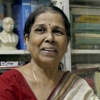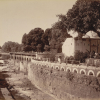Originally published in Marathi in 1989, We Also Made History: Women in the Ambedkarite Movement, a contemporary classic, details for the first time, the history of women’s participation in the Dalit movement led by Dr B.R. Ambedkar. The first part outlines the involvement of women in various Dalit struggles from the early twentieth century, drawing on diverse sources including Dalit periodicals, records of meetings, and personal correspondence. It speaks of the social conditions of Dalit women’s lives, daily religious practices and marital rules among Dalits, the practice of ritual prostitution, and various issues related to women. The second part consists of interviews with Dalit women activists from the 1930s. Both provide a rich store of material for historians of the Dalit movement and of gender in India. (Photo courtesy: bheemsangh.wordpress.com)
This edited excerpt from the English translation of this book by Urmila Pawar and Meenakshi Moon (published by Zubaan Books) provides insights into the planning and carrying out of the Chavdaar tank satyagraha at Mahaad, Maharashtra on March 20, 1927. The day is now recognised as Social Empowerment Day. It goes on to detail what happened after the march, the all-important incident of B.R Ambedkar burning the Manusmruti the same year, and his iconic speech addressed to the women satyagrahis thereafter, urging them to shed ‘shudra markers’ from their person by not only changing their way of thinking, but more significantly, their way of dressing.
The Chavdaar “Tank” Satyagraha at Mahaad
Raobahadur C.K. Bole had mooted a resolution in the Bombay Legislative Council that public watering places, schools, markets and temples should be open for the entry of untouchables. This was passed by the government in 1923. To implement this resolution, Babasaheb Ambedkar decided to conduct a satyagraha at the public tank (reservoir) at Mahaad. The Central Provinces Assembly had also earlier passed a similar resolution.
Babasaheb’s place of residence was Mumbai, and his earlist coworkers also came from Mumbai, and from Thane and Colaba districts. They had been respected all through their careers in the army, and did not appreciate being treated contemptuously as Mahaars on their return to their villages after retirement. They, therefore, built separate settlements in Mahaad and began to live there.
There were several considerations that influenced Babasaheb’s choice of the Chavdaar Tank at Mahaad for his satyagraha. He thought it would be easier to organise a movement with these trained army veterans, assisted by his co-workers. Also, Mahaad was at a convenient distance from Mumbai.

On 19th and 20th March 1927 a conference titled, First Assembly of the Outcastes of Colaba District was held at Mahaad where three thousand persons were present. It was decided that, “The municipality of Mahaad has declared public watering places open to untouchables. So we should commence the practice of drawing water from the Chavdaar tank as of today.”
Having resolved thus, Ambedkar together with all the assembled men and women went to the tank, asserted their human right by touching the water in the tank, and then returned peacefully to the hall, after which the assembly was dissolved.
The orthodox caste Hindus spread the word that the tank had been polluted by untouchables, and added that the untouchables were next going to enter the Veereshwar temple. They therefore began to beat up the untouchables who had gathered for the conference.
Related | Urmila Pawar: Pioneering Dalit Feminist Writer
Claiming that the Mahaad tank was called Choudhury tank and that it was a private tank, they accused the untouchables of trespassing. Of course the claim was false, because a few days later, on 1 st January 1928, Babasaheb strolled over to the Chavdaar Tank with the president of the Mahaad Nagar Parishad, and found the words “Mahaad Municipality 1877” carved on a stone at the southwest corner of the tank. It was apparent that somebody had recently tried to scratch out the letters.
The Chavdaar tank, which was not polluted by being used for the excretory functions of animals and birds, was considered polluted by the mere touch of the untouchables, and it was then ‘cleansed’ by putting in five sacred substances: milk, ghee, curds, and the urine and dung of cows. Cases were filed against the officebearers of the conference. The news of the beating-up of the untouchables was variously reported in newspapers like Kesari, Bahishkrut Bharat, Chabukswaar, Bhaala etc., from which it became clear who was for, and who against, the untouchables’ cause. Babasaheb was successful in his objective of making the untouchables aware of their rights and engendering a sense of identity among them.

It was decided to undertake another satyagraha at Mahaad. Babasaheb’s untouchable colleagues Gaikwad, Amrutrao Rankhambe, P.N. Rajbhoj, Shivtarkar and R.B.More, together with his caste Hindu supporters, Anantrao Chitre, Bhai Chitre, Surendra Tipnis, Bapu Sahasrabuddhe and others were with him. Thousands of untouchable persons assembled as decided in Mahaad on 25th and 26th December 1927. Women were present among them in large numbers. In response to the appeal by the district collector that the untouchables should not go to the Chavdaar Tank and touch the water while the case regarding whether the tank was public or private was being heard in court, some activists announced in their speeches that they were determined to undertake a satyagraha. A girl called Shantabai was among those who spoke.
“Unless the Chaturvarnya system is destroyed, there is no hope for Hinduism, because this system hampers the development of the individual. So allow this social revolution that we are bringing about to unfold peacefully, do not oppose us, reject the Shastras and embrace justice.” This is how Babasaheb appealed to the caste Hindus in fraternal terms.
Also read | Bina Das, the Freedom Fighter Who Shot at the Bengal Governor
Several resolutions were placed before the assembly after Babasaheb’s speech. Among them was a resolution to burn the Manusmruti, which holds women and Shudras in contempt and imposes immoral rules that amount to treating them as lower than animals. Gangadhar Sahasrabuddhe, R.N. Rajbhoj and others moved this resolution. After discussion, it was resolved that the Manusmruti be burnt. Another resolution stated that all human beings are equal from birth. An untouchable woman named Gangubai Savant supported this resolution.
The unethical rules regarding untouchables and women laid down in verses 1 to 11 of the Manusmruti, and the rights granted to Brahmins in this text, show that the Manusmruti goes to great lengths to crush the shudras and women and to elevate the Brahmins.
The day after the burning of the Manusmruti, a huge procession of satyagrahis marched round the lake and back to the assembly hall. Fifty women took part in this procession together with men. Some women came in the afternoon to get a glimpse of Babasaheb. In the night Babasaheb made a speech before the women and this proved to be a revolutionary event in their lives. We have therefore given the full text of his speech:
Babasaheb said, “I am extremely happy that you have come to this meeting. Men and women together resolve the problems of everyday life. So must the problems of society be solved by men and women working together. If the men take up this work on their own, there is no doubt that they will take a long time to complete it. But if women take this work on themselves, I am sure they will soon succeed. Even if they are not able to take up this work (of social change) by themselves, they should take every chance to help those men who are doing it. I therefore tell you that from now on you must always be present in our meetings. To tell the truth, the task of removing untouchability belongs not to men, but to you women.
“You have given birth to us men. You know how other people consider us to be lower than animals. In some places even our shadow is not acceptable. Other people get respectable jobs in courts and offices, but the sons born of your wombs are held in such contempt that we cannot even get a job as a lowly peon in the police department. When you know all this, if someone asks you why you gave us birth, what answer will you give? What is the difference between us and the children born of the Kayastha and other caste Hindu women sitting in this meeting? You must think about this: there is as much virtue in you as in the Brahmin women. Just as much as Brahmin women are faithful to their husbands, so are you faithful. And Brahmin women do not have the mental courage, capability and spirit that you have. If this is the case, then why should the children born of Brahmin women be treated with respect wherever they go, while your children face insults everywhere, why should they not even have the right to humane treatment? Have you ever thought about this? I feel that you have never thought about this. If you had thought about all this, you would have undertaken the satyagraha even before the men. Because the only sin we have committed is to have been born from your wombs, and because of this sin we have to bear the punishment of untouchability. So you must reflect on this: why is it a sin to be born of your wombs, while it is a virtue to be born to other women? If you think about this, either you will have to stop bearing children, or you will have to wash off this stigma. You must do one or other of these things. You must make a pledge that from now on you will not lead such a stigmatised existence. Just as the men have resolved to bring about progress in society, so must you.
The other thing I have to tell you is that you must all give up your old and disgusting customs. To tell the truth, no untouchable person carries the mark of being untouchable stamped on his forehead. But untouchable persons can be easily recognised as such because of their customs and way of life. I am of the opinion that these ways were once imposed on us by force. But such compulsion cannot continue under the rule of the British. Therefore you must now give up all those things that enable people to recognise you as being untouchable.
The way you wear your saris is a sign of your being untouchable, you must wipe out that sign. You must begin the practice of wearing your saris in the same fashion that upper-caste women do, it will not cost you anything. In the same way, your habit of wearing heavy necklaces round your necks and bracelets and bangles of kathil on your arms up to the elbow, mark you out as being untouchable. There is no need for more than one necklace. It is not as if your husband’s lives will be lengthened or that you will look beautiful because of a neckful of ornaments. Clothes rather than ornaments make you look good. Rather than spending money on ornaments of silver or kathil, you should spend it on good clothes. If you must wear ornaments, get gold ornaments made and wear them, or else you need not wear any. Also, you must take care to be clean in your person.
You are the Laxmis in your homes, you must see to it that no untoward event takes place in your homes. It is a matter for rejoicing that, since last March, everyone has given up eating the flesh of dead animals. But if this has not happened in any single household, you must take on the responsibility yourselves,. If anyone’s husband brings home the meat of a dead animal, you must tell him, this will not be tolerated in my house. And I am sure that, if you make up your minds on this, this inauspicious custom will be completely ended. Also, you must make sure that your daughters are educated.
“Knowledge and learning are not for men alone, they are essential for women too. Our ancestors were aware of this. If they had not been aware, the people serving in the platoons would not have educated their girls as they did. They say, as is the quarry so will be the stone, so you must remember that if you want to improve the next generation, you must not neglect to educate your daughters. I am hopeful that you will not go away and forget this speech I have given you. You cannot afford to delay in putting it into practice. So, before you return to your homes tomorrow morning, change your style of wearing your saris, show me and then go. Only then will I believe that what I have said has made an impact.” After hearing this speech, Shrimati Vithabai promised on behalf of the women present that they would do as Babasaheb had asked.
This speech of Babasaheb Ambedkar proved to be unprecedented and unique and every sentence of this later became the basis for the work of untouchable women activists. This is borne out by our activist sisters in their interviews at the end of this book.
This speech had a remarkable effect on the women. The untouchable women (Mahaar, Chambhar) of the Konkan region, especially those from Thane and Colaba districts, used to wear their saris so that their knees and even their thighs were exposed to view. This would make it possible for anyone to know their caste. After listening to Babasaheb’s speech, the women who had come for the conference turned up the next day wearing their nine-yard saris around their ankles like Brahmin women. Mrs Chitre and Mrs. Tipnis helped them to do this. Babasaheb was moved to see their loyalty, and he gave them each eight annas to buy themselves blouses and bangles.

On the next day, when the conference was over, Babasaheb went to see the Raigad fort. When he descended from the fort, the Mahaar and Chambhar women from the valley below the fort were standing to greet him with artis.
Babasaheb’s speech at the conference also had an impact on the men. They removed the rings and sticks from their ears and gave up eating the meat of carcasses. They stopped begging for morsels of food as part of their right of watan.
Some even resigned from their jobs as sweepers in the municipality.
Also read | Kaifi Azmi's Love Letter to Shaukat, Written in His Blood
The court case against Babasaheb Ambedkar and four other satyagrahis dragged on for three to four years. In February 1928 the court gave its verdict and the ban order on the tank was lifted. The prosecution appealed to a higher court. When the higher court gave its verdict in favour of the untouchables on 8th June 1931 the caste Hindus went to the High Court. There the case went on for four more years and on 17th March 1937 the High Court turned down the appeal of the caste Hindus. Thus the untouchables had to fight in court for ten years to get the right to draw water from the tank. It was their victory in the end. The credit for this victory goes as much to the united strength and perseverance of the untouchable men and women as to Babasaheb’s dynamic leadership.
In the Mahaad satyagraha, the untouchables became fully aware not only of their rights but also of their organisational strength. With the intention of using this strength to assert their right of entry to temples, they formed a satyagraha committee to enter the Parvati temple complex at Pune as Hindus, and on 13th October 1929 began a satyagraha there.
Excerpt reproduced from Shaukat's Azmi's memoir Kaifi & I, published by Zubaan Books with the permission of the publisher.












